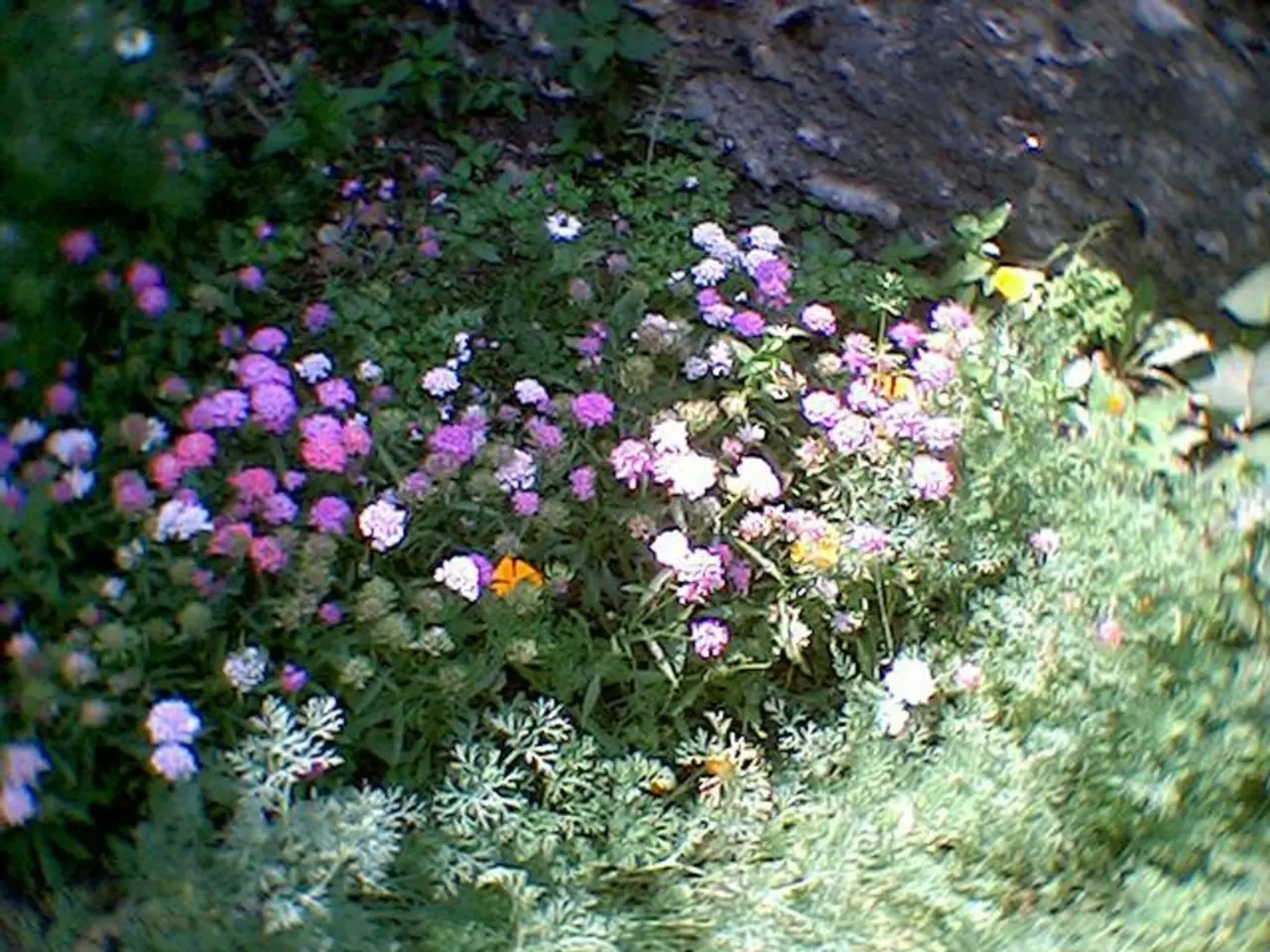Colorful Blossoms: Pigments, Fertilization, and Defense Mechanisms
In the vibrant world of nature, flowers play a pivotal role, acting as a beacon of nourishment, a guardian of stability, and a champion of diversity. Without them, we'd face a catastrophic decline in biodiversity, losing a significant chunk of our planet's flora.
Flowers are not just a thing of beauty but a vital cog in the intricate tapestry of life. They are the lifeblood of our planet, playing a vital role in food chains, ecosystem stability, and biodiversity. Herbivores, such as caterpillars, beetles, and slugs, play a role in floral ecology by removing excess plant material, helping flowers allocate energy to vital structures like nectar production.
The relationship between flowers and pollinators is a dance of coevolution. Flowers have adapted to attract specific pollinators, and pollinators have evolved to access nectar and pollen more efficiently. This dance is driven by the colours of flowers, which play a key role in pollinator behaviour.
Different pollinators perceive colour differently due to variations in their visual systems. Bees, for instance, have trichromatic vision sensitive to ultraviolet, blue, and green wavelengths, often detecting UV patterns invisible to humans that guide them to nectar. They are attracted to blues, purples, and whites rather than reds. On the other hand, birds, such as hummingbirds, have tetrachromatic vision and are attracted to bright reds and oranges, which signal high-energy nectar.
The production and regulation of these pigments are controlled by genetic and biochemical networks, including transcription factors such as MYB, bHLH, and WDR. The primary factors influencing the colours of flowers are the types and regulation of plant pigments, mainly carotenoids, flavonoids (particularly anthocyanins), and betalains.
Flowers have also evolved specialized structures, such as nectar guides and petal shapes and sizes, to maximize pollination efficiency. Nectar guides lead pollinators to the nectar's location, while petal shapes and sizes provide a comfortable landing pad and direct pollen towards the stigmas and anthers for fertilization.
Zoophilous flowers have formed partnerships with animals for pollination, with animals visiting flowers in search of nectar. Some flowers even release their pollen into water for pollination, a process known as hydrophilous pollination.
However, flowers are not just battlegrounds for pollination. They are also home to a variety of predators, such as wasps, ladybugs, and birds, who patrol the floral realm and prey on caterpillars and other potential plant munchers, acting as flower protectors.
Floral ecology is a tapestry of interconnected relationships, with herbivores, predators, and weather conditions all playing their part in the survival and success of flowers. Weather conditions, such as sunlight, rainfall, and temperature, play a pivotal role in the survival of flowers.
In conclusion, flowers are more than just a pretty sight. They are a vital component of our ecosystem, driving biodiversity, stabilizing ecosystems, and providing food for a wide array of creatures. Understanding the intricate dance of coevolution between flowers and their pollinators, and the complex ecosystem they inhabit, can help us appreciate the beauty and importance of these wonders of nature even more.
[1] Flower Colour and Pollinator Attraction: The Role of Plant Pigments and Visual Systems. (2021). Journal of Plant Ecology. [2] The Role of Flowers in Ecosystem Stability and Biodiversity. (2020). Nature. [3] The Dance of Coevolution: How Flowers and Pollinators Influence Each Other. (2019). Science Daily. [4] The Multi-Trait Floral Display Strategy: How Flowers Attract Pollinators Beyond Colour. (2018). Proceedings of the National Academy of Sciences.
- Understanding the relationship between flower color and pollinator attraction is crucial to environmental science, as it involves the role of plant pigments and visual systems, as explored in studies like 'Flower Colour and Pollinator Attraction: The Role of Plant Pigments and Visual Systems' (2021).
- The role of flowers in climate-change mitigation is significant, considering their impact on ecosystem stability and biodiversity, as highlighted in articles such as 'The Role of Flowers in Ecosystem Stability and Biodiversity' (2020).
- In the realm of general news, the intriguing dance of coevolution between flowers and their pollinators has been a topic of interest, as detailed in 'The Dance of Coevolution: How Flowers and Pollinators Influence Each Other' (2019).
- The beauty of flowers extends beyond the fashion-and-beauty industry, as they are often used in food-and-drink products, adding a splash of color and sometimes unique flavors, reflecting the variations in their pigment compositions.
- The education-and-self-development sector has recognized the importance of understanding the complex interplay between flowers, their pollinators, and their surroundings, and many courses now incorporate the study of floral ecology.





